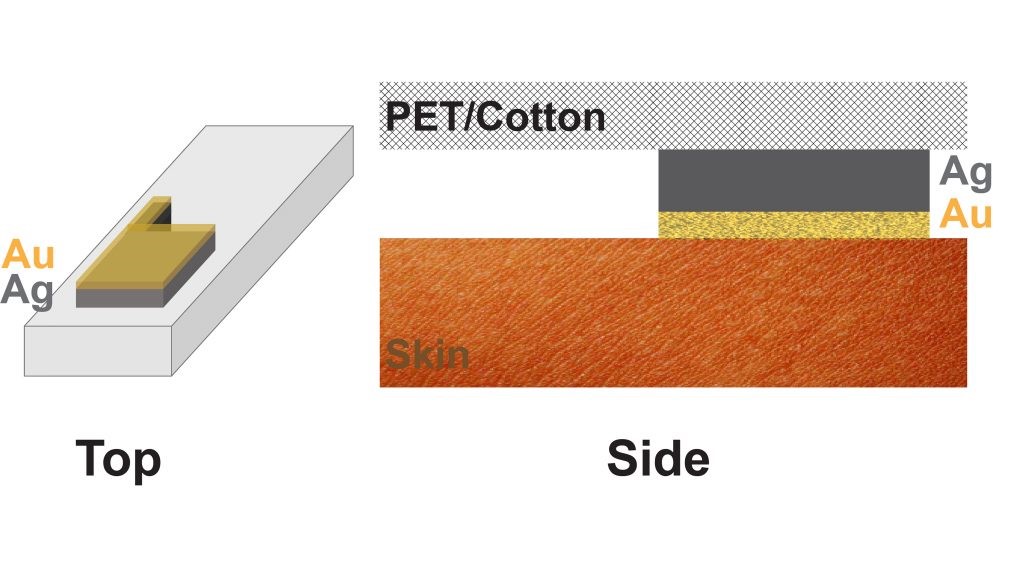Can Your Clothes Track Your Muscle Activity? (Researchers are Making it Happen)
Bioelectrical Sensors on Skin Used to Measure Electrical Signals in the Body
Valuable information detected within the body such as heart activity and muscle contractions are currently costly to attain through the present bioelectrical sensor technology available. In addition, it tends to be ineffective, uncomfortable, and difficult to manufacture.
This reality might soon come to an end as researchers from the University of Utah and Gyeongsang National University in South Korea have developed a bioelectrical sensor that is convenient and low-cost.

The sensor measures electromyography (EMG) signals that are generated in muscles when they contract. EMG signals are useful for studying muscle fatigue and recovery, and they have the potential to inform diagnosis and treatment of neuromuscular diseases.
“The signal we measure is a voltage over a time,” said Huanan Zhang, Author of APL Materials article detailing the work. “Every time your finger moves, the potential of the body, of the muscle, changes. So, we are able to detect that difference in potential.”
The biosensor is directly integrated into a piece of clothing, which provided advantages beyond convenience and comfort– soft clothing means better contact with the skin and a better signal.
Initially, the researchers printed silver paste directly onto fabric. Silver is conductive, making it a good material for detecting electrical signals. However, it is also somewhat toxic, so prolonged exposure can lead to skin irritation.
To harness the beneficial properties of silver while solving the problems it poses, the team deposited a layer of gold nanoparticles on top of the silver. The gold completely encapsulated the silver particles, preventing them from touching the skin.
The result was a detector that was both conductive and nonirritating to the skin. The amounts of gold and silver are small enough that it remains inexpensive as well.
The scientists tested the biosensor’s performance by placing it on the bicep and fingers and monitoring the detected signal as those muscles progressed through various exercises.
Because the sensor is part of the fabric and is designed to be used over long periods of time, it needs to withstand washing. The team retested sensor performance after multiple washings and found its performance remained high.
“This work not only designs a wearable device, which has the convenience factor, but it also has great performance and is biocompatible,” said Zhang.
The team believes that using this printing technique on textiles could revolutionize future bioelectrical sensors.
Original Story via APL Materials

